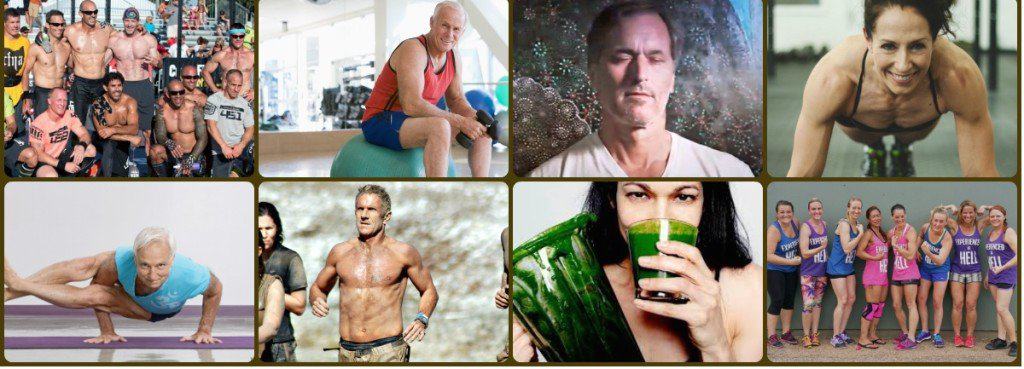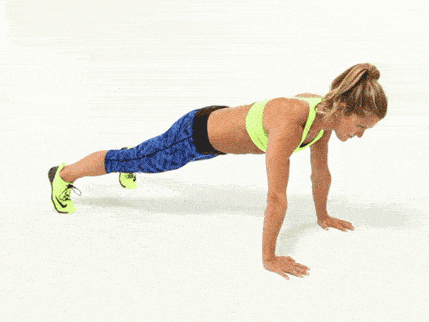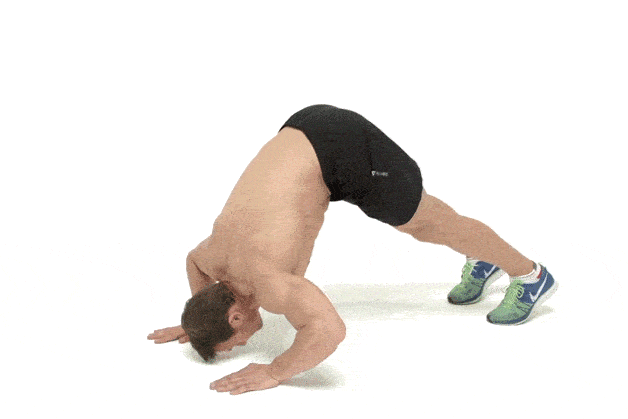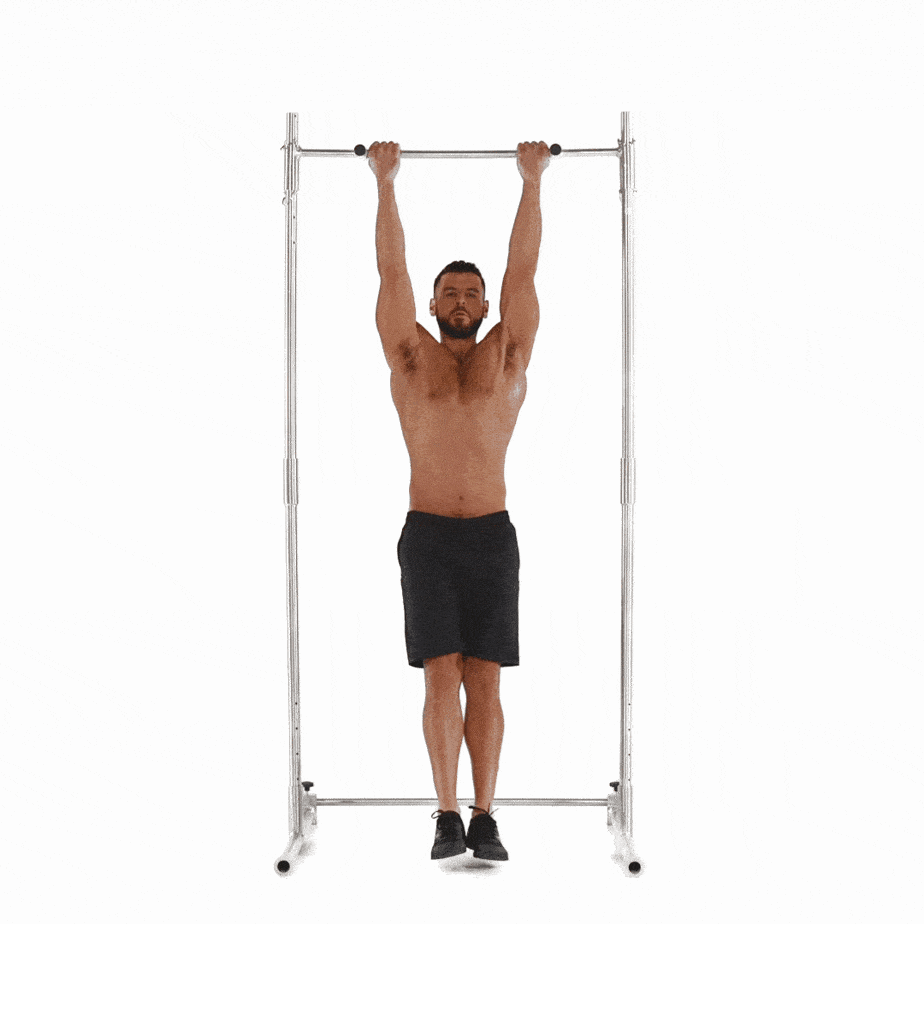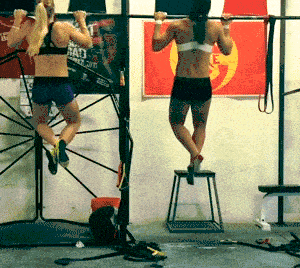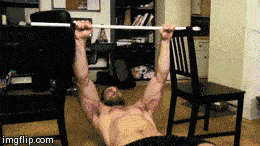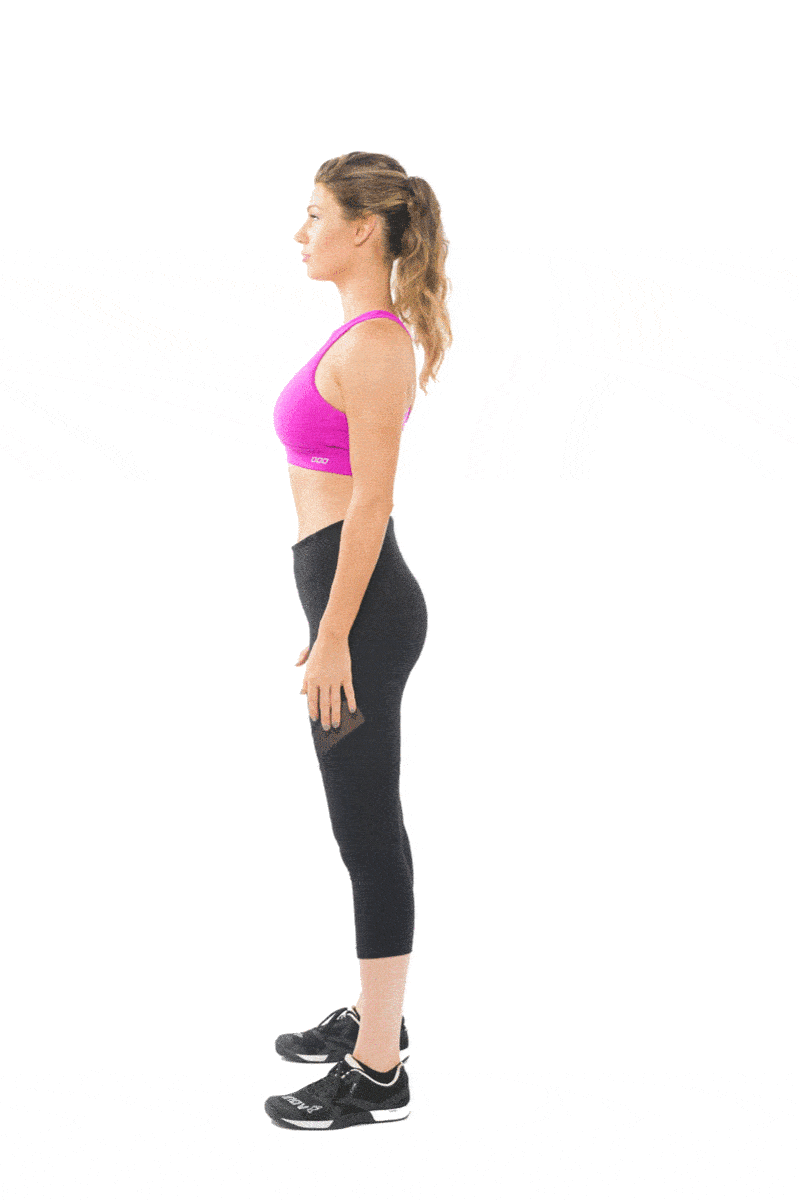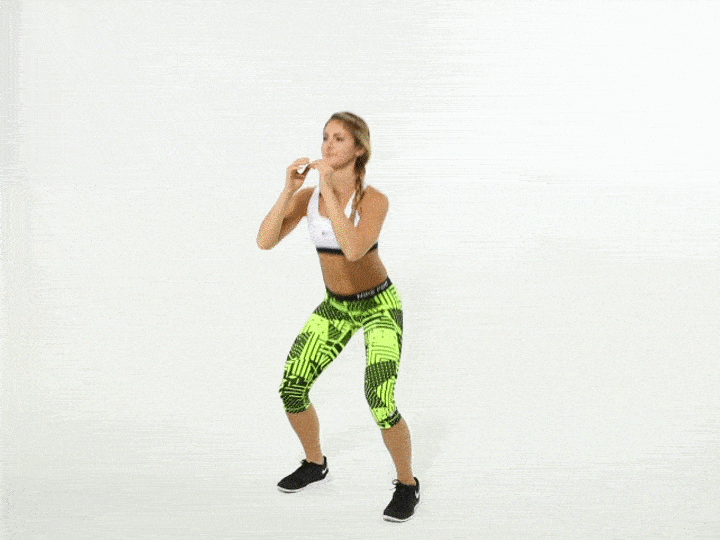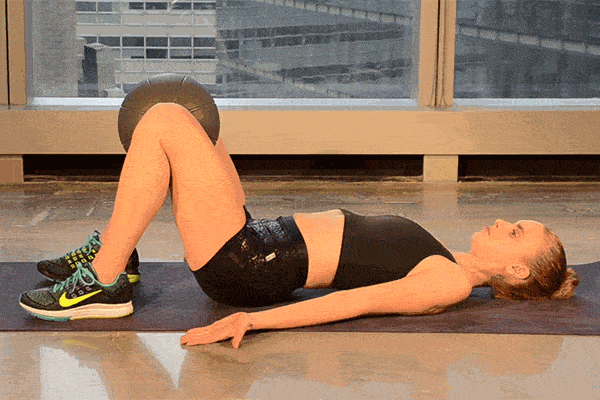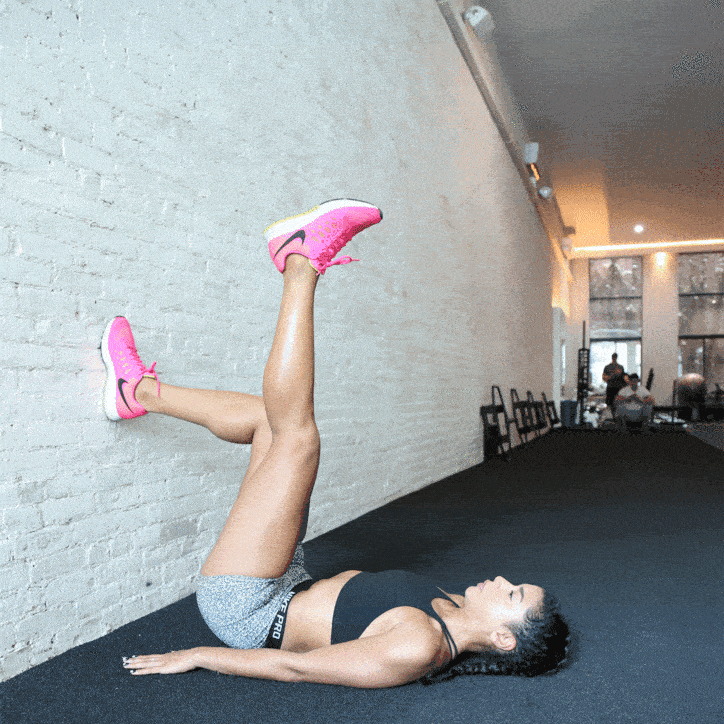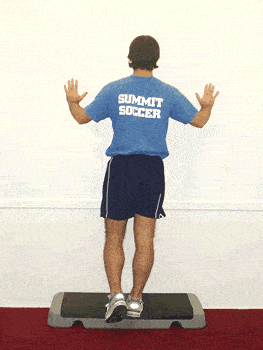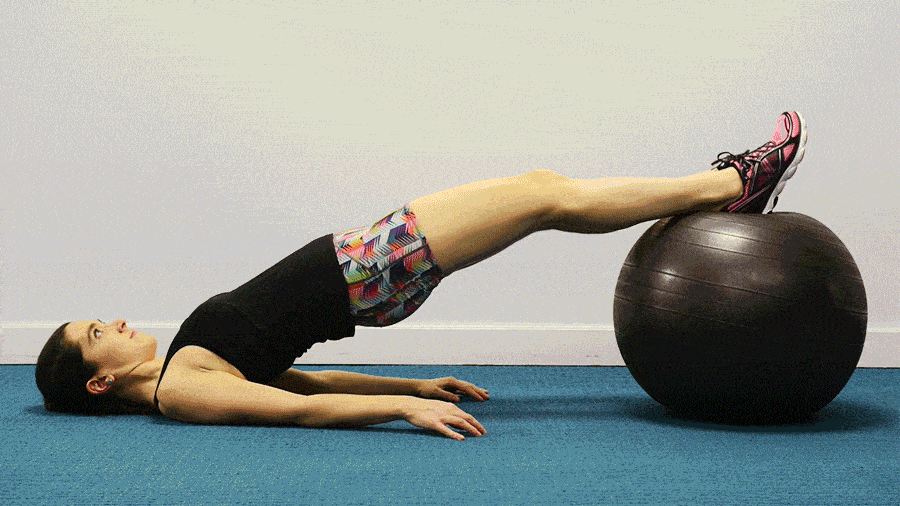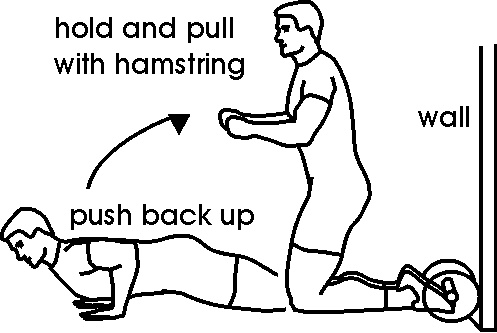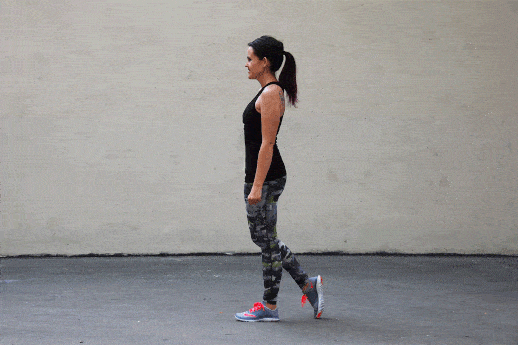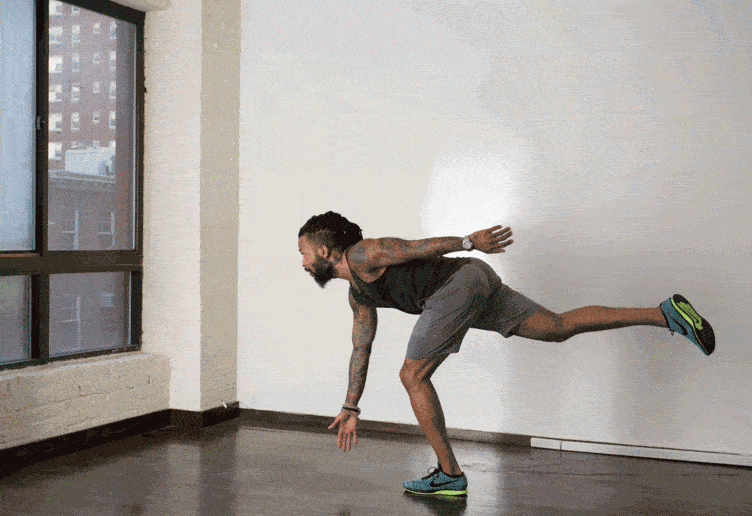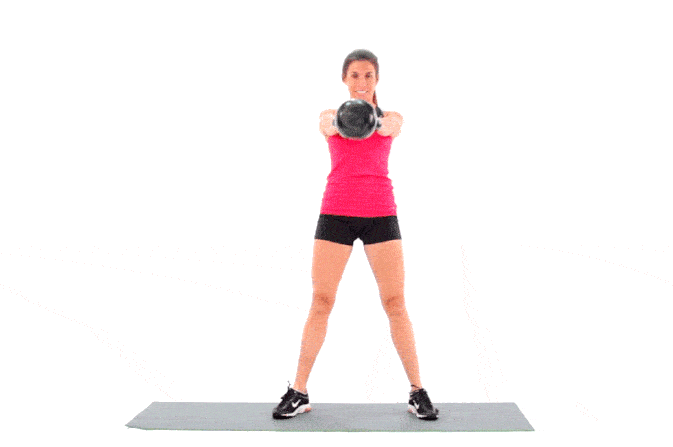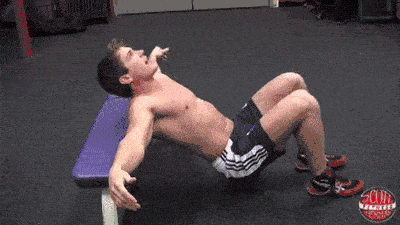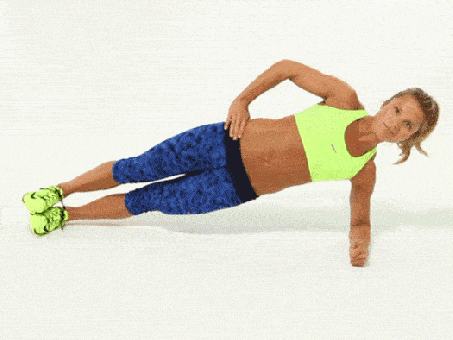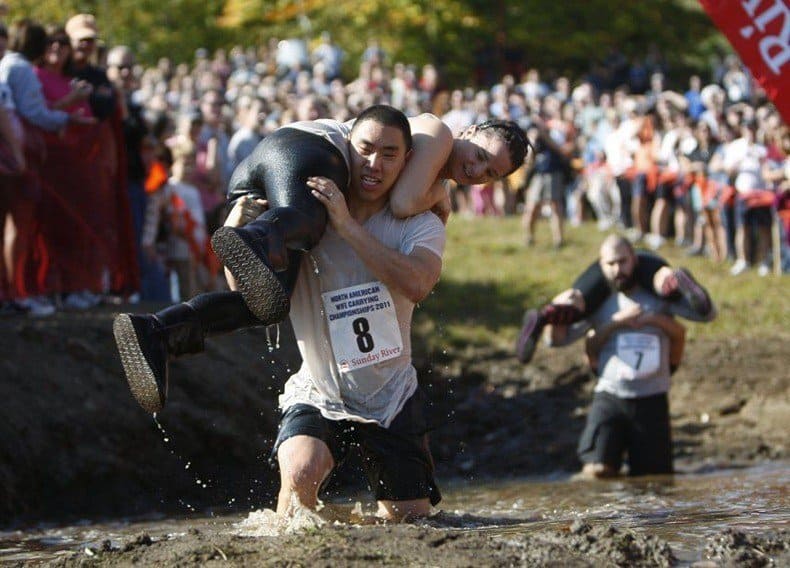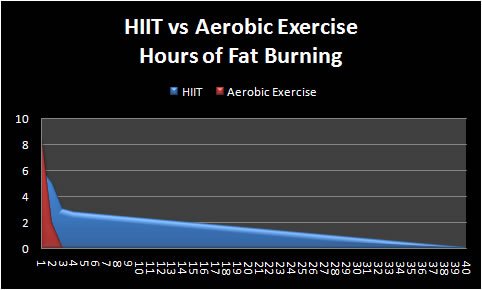How To Get Lean and Muscular, Part 2 — Move Your Body
To get lean and muscular you have to move frequently and at times under load. Choose the method you want to whittle away fat and build lean muscle.
IT’S TIME to get your body moving.
In Part 1, I covered how to measure and track your fitness level, including how to measure your body fat, strength and cardiovascular fitness. Now it’s time to explore the kind of exercise needed to get lean and muscular.
Why “lean and muscular” you might query?
This is the topic of a three-part series for a simple reason. Basically, you asked for it.
I began with assessing your current fitness level in Part 1. Here in Part 2, I show you the exercises that can whittle away fat while building lean muscle. Next week in Part 3, I’ll share with you the foods, drinks and supplements required to get lean and muscular.
As mentioned, this deep dive is all because over 250 of my readers said that what they most wanted to have in 2017 is:
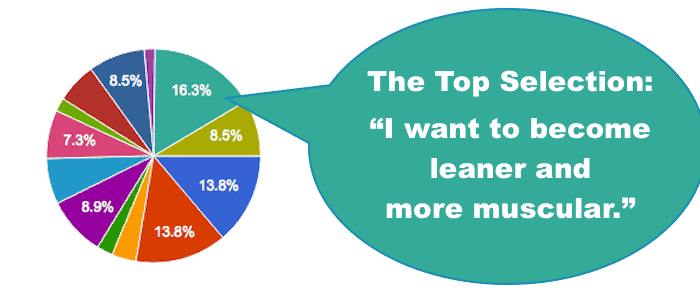 That pie chart above shows the data from a survey called, What Do You Want To Improve In 2017? As you can see, the most selected answer of 12 offered is:
That pie chart above shows the data from a survey called, What Do You Want To Improve In 2017? As you can see, the most selected answer of 12 offered is:
I want to become learner and more muscular.
This three-part series shows you the way.
From Part 1, you now have a sense about your flexibility, strength and body fat. The next step is to learn how to improve it all by moving that body of yours in specific ways so you can get lean and muscular.
You’ll want to move frequently under light load, and a few times per week under heavy load.
The good news is that if you’d rather stick needles in your eyes rather than do vigorous exercise, you may not have to. Your body will benefit by mild exercise, such as walking, doing a seven-minute routine a few times a week and/or moving with some vigor for one or two minutes every hour during the day that your sitting at a desk or on a couch.
My aim is to offer something for everyone who is willing to roll off the couch, get off the floor and move. Naturally, the more you put into it, the more you’ll get out of it.
In this article, you’ll discover:
- How to get fit fast at one minute per hour.
- How to get fit in seven minutes four times a week.
- The five essential exercise types that in combination will get you lean and muscular.
- Simple and effective mobility training that keeps your body young.
- Why the zig zag IF/THEN back door keeps your goals in play.
- Five people who can’t help but inspire you through their example.
It’s all right here. Let’s dig in…
1. Fast Fit At One Minute per Hour
“Sitting is the new smoking” blared out several news headlines.
Yes, beginning around 2010 there were many articles published presenting studies that indicate that sitting all day and into the night can cause serious health problems.
I wrote four such articles myself:
14 Reasons Sitting All Day Keeps You From Getting Fit
6 Ways Sitting Will Kill You, Even If You Exercise: Here’s What To Do
Knowledge Workers Beware — Sitting Could Kill You
Sit A Lot? Six (Powerful) Reasons NOT To
The upshot is that prolonged, consistent sitting makes you unhealthy. According to eHealthBlog.com, sitting can kill you in specific ways, such as:
- Lower extremity problems like poor circulation leading to deep vein thrombosis and osteroporisis.
- Deteriorating mental health.
- Chronic kidney disease, particularly for women, who when reducing their sitting time from a full eight to three hours reduced the risk by 30%. (For men it’s 15%).
- An increased risk of metabolic syndrome by 73% (that’s a three-fisted punch!).
- Muscle degeneration, including nice soft saggy glutes, and weak paunchy abs.
- A whole assortment of chronic diseases, as above noted.
The solution: move for one or two minutes every hour!
Do this:
- Set a timer to chime every hour during the day and night when you’re usually on your duff.
- Get up and move for one to two minutes.
- Do movements that will quickly make you breathless, like walk up stairs, squat up and down, do push-ups/pull-ups, jump rope, perform jumping jacks.
- Plan which movements you’re going to do when. For instance, the first five might be a lower body exercise like squats, and the next five an upper body exercise like push-ups. (See #3 and #4 below.)
You’ll be surprised at the cumulative effect of doing just one or two minutes of exercise eight-plus times a day, even when each session is separated by an hour.
Don’t Think You Need It?
Now, if you think that you really don’t need to do this, take a moment to add up some hours. Does this math pretty much reflect the number of hours that you’re not moving each day?
Commute time: 1 hour (30 minutes each way)
Desk time: 8 hours
Lunch time: 1/2 hour
Dinner time: 1/2 hour
TV time: 3 hours
Sleep time: 7 hours
Total Hours Not Moving: 20 hours
Hmm… now that I’m looking at my assumptions for hours spent sitting, I’m thinking that I’ve underestimated them — it’s doubtful that the average desk-jockey actually is on his/her feet and moving four hours out of 17 if seven are spent sleeping.
The bottom line is that our bodies were not designed to be stagnant all day long, and when they’re made to do so, they get sick and deteriorate.
So, set the timer to chime every hour that you’re predominately sitting. Once you hear it, be like a Pavlovian dog and start salivating for exercise. Stand up and do some vigorous movement for a minute or two. Once that’s become habitual, perhaps you’ll be ready to up the ante to seven minutes.
Or You Can HIIT It Hard
OK, I admit that I’m sneaking this in here, because HIIT (“High Intensity Interval Training) isn’t just some “one and done” program.
HIIT is comprised of short, high-intensity spurts of exercise, with slow recovery phases, repeated during one exercise session. This spurt is done at 85 to 100 percent of your maximum heart rate rather than the 50 to 70 percent sustained in moderate endurance activity.
Although the spurt part of the exercise lasts a minute or (more commonly) less, the whole exercise routine takes longer.
It’s worth it.
I’ve written about the benefits of HIIT before, but the next bit about it comes from a Dr. Josh Axe article entitled, One Minute Workouts Could Be All You Need.
At McMaster University in Hamilton, Ontario, researchers compared HIIT to moderate-intensity continuous training recommended in public health guidelines. They focused on HIIT’s impact on cardiorespiratory fitness and insulin sensitivity in a study that put sedentary men in one of three 12-week-long sessions:
- Three times a week of intense exercise,
- Three times a week of moderate exercise, or
- A control group that didn’t perform any exercise.
The HIIT group’s total exercise session lasted just 10 minutes, featuring a two-minute warm-up, three-minute cool-down and three 20-second “all-out” cycle sprints. Each sprint featured two minutes of easy cycling for recovery. The moderate-intensity group involved five times as much exercise, featuring 45 minutes of continuous cycling each session.
When looking at cardiovascular fitness and blood-sugar control improvements, the high-intensity group’s results were nearly identical to the moderate-exercise group that spent much more time exercising.
The high-intensity group’s 10-minute workout featured just one minute of high-intensity exercise (three 20-second sprints). (1)
https://youtu.be/K6v9AEccTvU
Among many, here are three health benefits of HIIT:
- It’s anti-aging — HIIT reduces expression of certain genes linked to accelerated aging. (2)
- It keeps your hunger hormones in check — Researchers out of the University of Bath in the UK found better hormone balance in individuals who participated in HIIT. (3)
- It’s a proven way to burn off excess fat fast. (4)
How To HIIT?
My preference is stairs. I find that sprinting up stairs is easier on my body than sprinting on a flat surface, say a grass field or track.
I do eight sets — 30 seconds sprint (up the stairs), 90 seconds active rest (down the stairs):
- Two warm up at 50% maximum effort
- Four that are at maximum effort
- One that is at maximum effort, but at this point my body has no more go
- One this is a slow motion cool down
Do not try to go “all out” on any set when you first start out with HIIT. I did and strained my Achilles Tendon, which took months to heal.
Dr. Axe does HIIT on a treadmill:
2. Up the Ante — 7 Minutes, 4 Times per Week
At this point you’ve been briefed on exercising for up to two minutes every hour that you’re sitting, and how to perform HIIT routines.
Now let’s talk about seven minutes.
The illustration below comes from a New York Times article entitled, The Scientific 7-Minute Workout written by Gretchen Reynolds. She quotes Chris Jordan, the director of exercise physiology at the Human Performance Institute in Orlando, FL, who says:
“There’s very good evidence” that high-intensity interval training provides “many of the fitness benefits of prolonged endurance training but in much less time.”
This statement reflects work by scientists at the aforementioned McMaster University and other institutions which indicate that even a few minutes of training at an intensity approaching your maximum capacity produces molecular changes within muscles comparable to those of several hours of running or bike riding.
Chris Jordan suggests the 7-minute exercise routine be performed thus:
- In rapid succession, allowing 30 seconds for each exercise, and
- Keep the intensity at about an 8 on a discomfort scale of 1 to 10.
In other words, those seven minutes should be quite unpleasant, but the silver lining is that you’re finished in just seven minutes.
Intensity
Notice a common denominator so far?
What ties together the one/two minutes per hour exercise routine, the HIIT and this seven minute stuff is INTENSITY.
If you’re going to spend less time exercising, you have to expend more effort.
Note: Intensity is often unpleasant. Gradually work up to unpleasantness. If you’re not accustomed to exercising — even for seven minutes — and you jump in and go all out till it’s painful, then (guess what?) you’re going to soon quit. Quitting is not the objective. Start at a comfortable pace and build your capacity to tolerate — even thrive with — discomfort.
For clearer pictures of the exercises than the illustration above and a description on how to do them, check out this article by Greatist.
3. The 5 Essential Body Weight Exercises
There are thousands of ways to exercise your body, but they all can be described like this:
- Upper body push,
- Upper body pull,
- Lower body push,
- Lower body pull, and
- Levers.
As I wrote here:
Any of these movements can be done using the resistance of our body weight or by using equipment, such as free weights (barbells and dumbbells), weight machines or resistance bands.
Personally, I like them all, but the key consideration here is compliance. Compliance means doing what you set out to do. A smart way to ensure this happens is to sufficiently simplify your intended actions in order to minimize the potential for excuse-making.
If you have a body, you have all the equipment you need to become very strong and functionally fit. The excuses, thereby, are diminished.
So, if you belong to a gym and have access to weights and weight machines, adapt the following exercises to the equipment available to you; otherwise — no excuses — you have a body, and that’s all the “equipment” you need.
Upper Body Push
Upper body muscles that contract (shorten) when pushing a load, whether your body or anything else, are the:
- Pectorals (chest)
- Deltoids (shoulders)
- Triceps (back of the arms)
Common exercises for the upper body include push-ups, handstand push-ups, triceps dips and parallel bar dips. The common denominator between all these exercises is that you’re pressing, or pushing you body away from an immovable object, like a wall, floor or bar.
Vary the load: You can create more load (make it harder) by positioning yourself so that more body weight is positioned over the muscles doing the work, and lessen the load by doing the opposite, such as pushing yourself away from a wall or positioning your lower body weight on your knees rather than toes while doing push-ups.
Push-up
The push-up can be done in a multitude of variations. Putting your lower body weight on your knees reduces the pressing load. Bringing your hands closer to your chest puts more emphasis on your triceps, while placing them wide apart puts more emphasis on your outer chest and deltoids. Keep your body stiff, don’t let your midsection or head sag and don’t forget to breathe.
Pike Press
The pike press is pretty advanced. This exercise works your shoulders and triceps more than do push-ups. If you can’t do more than 15 push-ups fairly easily you might want to skip this one so you don’t fall forward and smash your nose in the floor. Try different angles and you’ll quickly discover which are harder than others.
Triceps Dip
Try varying your hand positions from just outside shoulder width to two thumbs apart behind your back. You can make it harder by elevating your feet, and easier by bending your knees and bringing your feet closer to the bench.
Upper Body Pull
Upper body muscles that contract (shorten) when pulling a load, whether your body or anything else, are primarily the:
- Lattissimus dorsi (under the arms, extending to the back)
- Biceps (front of the upper arms)
Common exercises for the upper body include push-ups, handstand push-ups, triceps dips and parallel bar dips. The common denominator between all these exercises is that you’re pressing, or pushing you body away from an immovable object, like a wall, floor or bar.
Vary the load: You can lighten the load by helping yourself up to the bar by stepping up on a chair, and can increase the load by adding weight to a back pack.
Chin-up
To do a chin-up grab the bar with your palms facing you, contract you lats and pull with your back and arms until your chin clears the bar.
Pull-up
Pull-ups are just like chin-ups except your palms face away from you. These are harder than chin-ups because your biceps are less activated and therefore contribute less to pulling you up to the bar.
Supine Pull-up
This is a good alternative to a pull-up bar should you not have one or are not strong enough yet to use it. Place a sturdy bar between sturdy chairs that will not collapse once you load your weight upon them. Straighten and stiffen your body, position your hands shoulder width apart on the bar and pull your chest to it.
Lower Body Push
As with the upper body push exercises, the muscles involved in lower body push exercises contract (shorten) when pushing a load, whether it’s your body or anything else. The primary muscles of the lower body that do this are the:
- Quadriceps (front of the upper legs)
- Adductors (inside of the upper legs)
- Gluteus maximus (butt)
- Gastrocnemius (calves)
Vary the load: Lighten the load by holding onto something so your arms can help you up and down; increase the load by slowing down the tempo (four seconds down, four up), pausing for three seconds at the bottom or using one leg.
Squat
Tighten your body, thrust your butt out as if you’re going to sit in a chair and squat down as low as you can go comfortably. To make it easier, just bend your knees a bit. To make it harder, squat low and pause at the bottom.
Squat Jump
To increase the difficulty for a free squat, or make it more aerobic, spring up from the contracted (down) position and jump.
Glute Bridge
Holding a ball between your knees accentuates the contraction in your inner thighs, hips and glutes, but you can still get a good burn without it. Move slowly and deliberately.
Single Leg Glute Raise
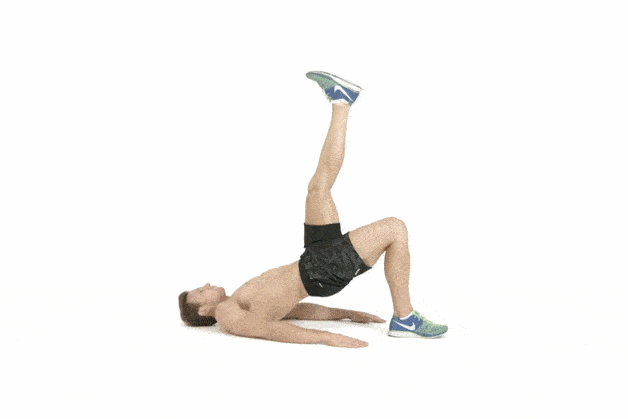 The single leg glute raise takes some getting used to. You might feel unbalanced or wobbly at first, but stay with it and you’ll reap the benefits of a toned butt.
The single leg glute raise takes some getting used to. You might feel unbalanced or wobbly at first, but stay with it and you’ll reap the benefits of a toned butt.
Single Leg Glute Wall
Press the foot hard into the wall and lift your butt off the ground in a slow and steady rhythm. Keep the other leg as perpendicular to the floor as you can.
Calf Raisers
If you can’t get about 15 reps on one leg, use both. You can vary your foot positions to accentuate different parts of the calf muscle — toe in, parallel and toe out. Don’t bounce at the bottom as this can wear out your Achilles tendon. Pause at the top. Keep your knee(s) slightly bent.
Lower Body Pull
As with the upper body pull exercises, the muscles involved in lower body pull exercises contract (shorten) when pulling a load, whether it’s your body or anything else. The primary muscles of the lower body that do this are the:
- Hamstrings (back of the upper legs)
- Glutes (butt)
Vary the load: Lighten the load by placing more of your foot or calves onto the ball; increase the load by slowing down the tempo (four seconds each direction), or pausing for three seconds when extended and/or contracted.
Hamstring Ball Roll
The key with this movement is to keep your body off the floor and in a locked position as you curl the stability ball back and forth by contracting your hamstrings. This works both the hamstrings and glutes.
Hamstring Ball Curl
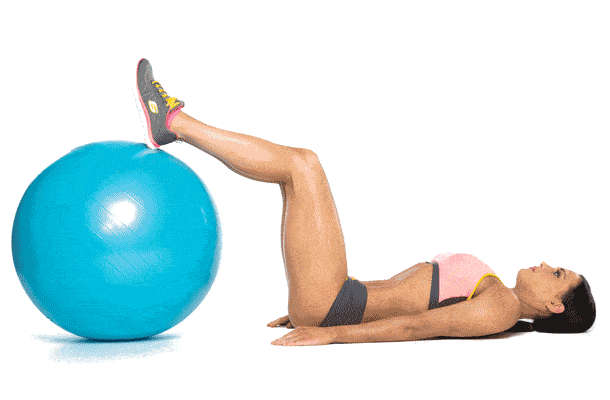 Dig your heels into the stability ball (or you can use a chair), contract your glutes, push into the ball and raise your lower body off the floor. Pause and repeat.
Dig your heels into the stability ball (or you can use a chair), contract your glutes, push into the ball and raise your lower body off the floor. Pause and repeat.
Hamstring Curl
This hamstring curl movement is advanced. If you’re not properly conditioned for it, you’ll quickly get a charlie horse in the hamstring area. Most people can not pull themselves back up by the strength of their hamstrings alone, so the push up helps generate upward momentum.
Levers
As you might expect given the name, Levers refer to performing a movement pivoted at a fixed hinge, or fulcrum. Gymnasts do these in several different impossible ways, but in our case we want to do Levers that use our hips as the hinge.
Vary the load: Lighten the load by using less weight or doing partial movements (like not touching the ground in the Single Leg Dead Lift); increase the load by slowing down the tempo (four seconds down, four up — except for kettle bell exercises), pausing for three seconds in the contracted and extended positions.
Single Leg Dead Lift
Yes, it requires some balance, but keep at it and you’ll get it. The single leg dead lift is a Lever exercise that exercises your lower back and glutes.
Single Leg Dead Lift Leap
This variation of the single leg dead lift includes a hop, which makes it harder and more aerobic.
Kettlebell Swing
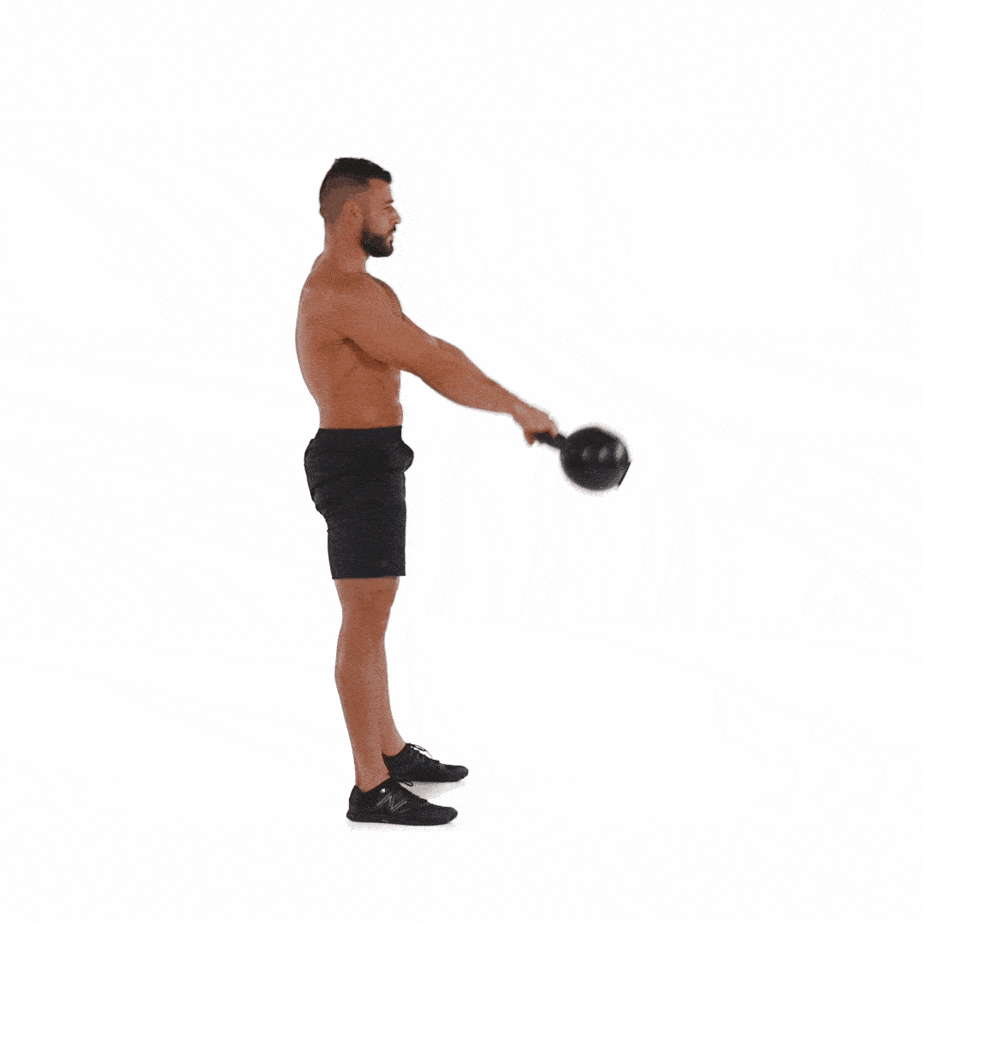 The Kettlebell Swing is a terrific multiple muscle exerciser. Do enough of them and you’ll feel the cardio and muscle-building effects in your entire body, particularly the thighs and glutes. Make sure you bend back as if you’re going to sit in a chair and then “snap” your hips forward to propel the weight to shoulder height. You can also use a dumb bell; grab either end and do the movement the same way.
The Kettlebell Swing is a terrific multiple muscle exerciser. Do enough of them and you’ll feel the cardio and muscle-building effects in your entire body, particularly the thighs and glutes. Make sure you bend back as if you’re going to sit in a chair and then “snap” your hips forward to propel the weight to shoulder height. You can also use a dumb bell; grab either end and do the movement the same way.
Remember: You’re “snapping” (quick contraction) your hips to move the weight, not lifting it.
Hip Thrust
This is the floor variation of the glute bridge done on a bench. It doesn’t isolate the glutes or hamstrings as well as the glute bridge, but you will exercise your triceps a bit.
Glute Bridge
Keep your upper back and feet in the same position as you lift your hips off the floor and jut them up as far as is comfortable, while tensing your entire core and glutes. Slow and methodical gets you that burn.
Pilates Frog Circle
Yes the Pilates Frog Circle primarily works the abs, but it’s also an example of a Lever exercise in that your whole body is involved and there’s one fulcrum, your hips. Slow, steady and controlled.
Side Plank
You can do reps with the Side Plank as shown in the picture, or hold it static as with the front plank. Keep that arm positioned directly under your shoulder and perpendicular to the floor and your body.
Front Plank
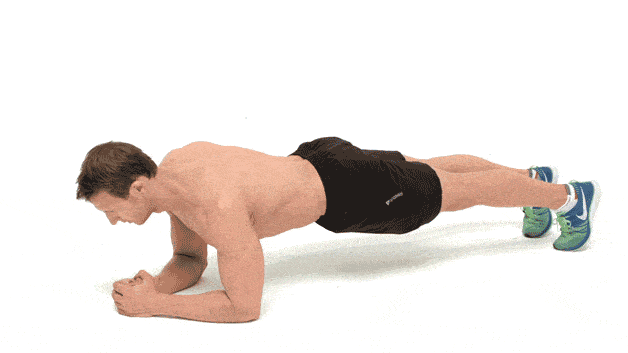 Once you’re in the plank position with your elbows under your chest, hands clasped under your chin and balanced on your toes, make sure that you contract your entire body, and don’t let it sag.
Once you’re in the plank position with your elbows under your chest, hands clasped under your chin and balanced on your toes, make sure that you contract your entire body, and don’t let it sag.
For more examples (including video) of exercise movements, check out my six-part series, The Functionally Fit Fast Workout.
4. Train Your Heart
As you might expect, there are many ways to improve your cardiovascular conditioning. The usual suspects are running, hiking up hills, biking, swimming and exercise circuits — the 7-minute drill described above being a good example.
If you enjoy doing these and don’t mind the time it takes to, say, go for an hour-plus bike ride or hike, then by all means do; just ensure that it’s at a pace that enables you to talk, but not easily. If you can chatter on and on then your breathing is not sufficiently taxed by the aerobic exercise your doing.
If, however, you want to save time and get fitter and leaner faster, scroll back up and take another look at the HIIT material. As mentioned, adding short bouts of intensity is a sure way to burn fat and build lean muscle. You just must find a method that will not injure you and start slowly.
This chart tells the tale:
If you rather be blue than red (and I’m not talking political affiliation here) and thereby burn a lot more fat, then incorporate HIIT into your exercise regimen.
5. If You Do Nothing Else, Mobilize!
Nearly every morning I spend at least ten minutes mobilizing my joints. This is more important to me than sporting taunt muscles or being able to run like a gazelle. (Good thing cause I never could run like a gazelle.)
When I’m old and gray, I rather be able to stand straight and get up and down off the floor than have to be wheeled to the bench press and impress someone with some heavy lifting.
In Part 1, I showed you three ways to test your mobility: the Sitting-Rising Test, the Peasant Squat and Bending (side-to-side and forward). Now I want to show you Dr. Ben Kim’s mobility routines.
Dr. Ben Kim is a chiropractor from Ontario, Canada who operates a very informative website called DrBenKim.com. He often posts “how to” videos demonstrating various exercises, stretches, mobility drills and the like.
On one particular page, Dr. Kim has what he refers to as “10 high value mobility exercises“. I think these five are particularly valuable to most of us:
https://youtu.be/aIKnJDjaiVQ
If you like Dr. Kim’s approach to mobility, don’t be shy — go see the rest of the ten.
6. Be Prepared To Zig Zag
You know “zig zag”.
Although a straight line is the shortest distance between two points, sometimes life serves us roadblocks of one sort or another and we have to zig zag till we get back on track.
This is apropos to your goal of getting lean and muscular, because there are going to be times when your plan for the day gets attacked. The assault could be from something outside your control, or simply a momentary lack of will.
You need to be prepared for this by planning your IF/THEN response.
It goes like this:
“IF I’m supposed to do my HIIT workout today but have no gas in the tank, THEN I’ll go walk up a hill a few times.”
This is a far better approach than simply giving yourself a pass. You had (presumably) scheduled the workout, the day and time has arrived and you better do something. If you don’t, the excuses will keep coming and you’ll soon be completely off your game plan.
After you set your get lean and muscular goal and create your plan to achieve it, then also plan the back-up IF/THEN response on those days when you simply can’t get done what needs doing.
7. Get Inspired
Right now, you might wander over to a mirror, strip off some clothes, shudder, and think that there’s no way you’ll ever be lean and muscular.
With that mindset, you could be right.
But what if we could replace your mindset with Jack LaLane’s? You go take a vacation and let Jack’s consciousness pop into your body during your absence to run things. Jack knows how to get a body in shape. He has no doubt about it.
When you return from vacation, your body would be transformed by Jack’s knowledge, will and effort.
Well, you don’t have Jack, but you do have you, and you’re plenty! All you need to do is get an inspired mindset.
Let’s start with a picture and an article.
Here’s the picture:
The article is called, Four Masters Who Defy Age and Prove That You Can Too!
At 95, water skier Charles Eugster is the oldest of the bunch. If he’s not impressive enough for you, how about Robert Marchand, who at 105 years young just won a cycling world record.
“He’s got two essential qualities. A big heart that pumps a lot of blood, and he can reach high heart beat values that are exceptional for his age,” Marchand’s physiologist, Veronique Billat, told the AP. (5)
How did Robert Marchand do it?
How does Charles Eugster, Sam Bright, Phyllis Sues and Ernestine Shepard to it?
First they had to believe they could. Then they had to plan the work and work the plan.
The benefit derived is to live a long and strong life, as these three articles will amply show you:
- The Anti-aging Effects of Exercise
- The Many Benefits of Strength Training
- A 75-year Old Surgeons 7 Anti-aging Secrets
- 3 Expert-approved Anti-aging Exercise Routines You Can Do and Why You Should Bother
We humans often need to witness what’s possible as achieved by another person before we truly believe it’s also possible for us. Well, now you know that it’s possible for you to become lean and muscular, or whatever else you want.
Go get it!
Your Takeaway
Remember (and do) these seven things:
- Read Part 1 if you haven’t already so you can assess your current fitness level.
- Decide how much time and effort you’re willing to expend to get lean and muscular.
- Experiment with the exercises and routines offered here.
- Choose among the exercise routines that you’re willing to do on a consistent basis.
- Plan your IF/THEN backdoor.
- Recruit a friend to workout with.
- Keep yourself inspired.
See you next week in Part 3 where I’ll share why nutrition is more than half the battle to get lean and muscular.
UPDATE –> Go Read Part 3
P.S. Are you a Subscriber? Don’t miss out… Subscribe!
Last Updated on April 11, 2023 by Joe Garma

